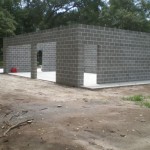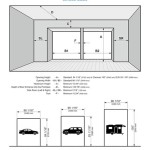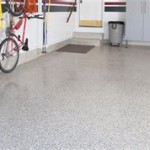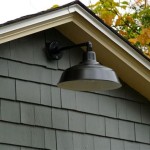How To Pour A Garage Floor Slab
Pouring a concrete garage floor slab is a significant undertaking, but with careful planning and execution, it can be a successful DIY project. This article provides a comprehensive guide to the process, from initial preparation to the final curing stage.
Planning and Preparation
The first step involves meticulous planning and site preparation. This includes accurately calculating the required concrete volume based on the slab's dimensions. Overestimation is advisable to account for minor variations and potential spills. Contact local building authorities to determine necessary permits and ensure compliance with building codes regarding slab thickness and reinforcement requirements.
Next, the site requires preparation. This involves excavating the area to the desired depth, ensuring a level and compacted base. A layer of gravel, typically 4-6 inches thick, should be laid and compacted to provide proper drainage and a stable foundation. This gravel base prevents the concrete from cracking due to ground shifting. Proper compaction is crucial for preventing settling and ensuring a uniform slab thickness.
Formwork and Reinforcement
Constructing robust formwork is essential for containing the concrete and shaping the slab. The formwork, typically made of lumber, should be straight, level, and securely braced to withstand the pressure of the wet concrete. Ensure the formwork is accurately positioned and aligned to achieve the desired slab dimensions. Stake the formwork firmly to prevent movement during the pour.
Reinforcement adds structural integrity to the slab, preventing cracking and increasing its load-bearing capacity. A common method involves using wire mesh or rebar placed within the concrete. The reinforcement should be elevated slightly above the gravel base using chairs or supports, ensuring it is fully encased within the concrete for optimal performance. Consult local building codes for specific reinforcement requirements.
Vapor Barrier Installation
A vapor barrier, typically a sheet of polyethylene film, is crucial for preventing moisture from migrating through the slab. This barrier should be laid over the entire gravel base, extending up the sides of the formwork. Overlapping the seams by several inches and sealing them with tape ensures a continuous barrier against moisture. This step helps prevent issues like mold and mildew growth within the garage.
Concrete Placement and Finishing
Once the preparations are complete, it's time for the concrete pour. Order the concrete from a reputable supplier, ensuring timely delivery. A concrete pump can be beneficial for larger slabs, facilitating efficient placement. Spread the concrete evenly within the formwork, using shovels and rakes to reach all corners and ensure a consistent depth. Consolidation, typically achieved through vibration, removes air pockets and ensures a dense, uniform slab. This can be done with a vibrating screed or a handheld concrete vibrator.
After the concrete is placed, the surface needs to be finished. A bull float or darby is used to level the surface and remove any imperfections. Edging tools create rounded edges along the perimeter of the slab, enhancing its appearance and preventing chipping. A broom finish, created by dragging a broom across the surface, provides a textured finish for improved traction.
Curing and Control Joints
Proper curing is essential for achieving the concrete's full strength and durability. This involves maintaining adequate moisture content within the slab for a specific period, typically seven days. Methods include covering the slab with plastic sheeting or applying a curing compound. Consistent moisture prevents the concrete from drying too quickly, which can lead to cracking and reduced strength.
Control joints, also known as contraction joints, are planned cracks that help manage the inevitable shrinkage of the concrete as it dries. These joints are typically sawed into the slab within 24 hours of pouring, creating weakened planes that allow the concrete to crack in a controlled manner, preventing random cracking. The spacing of control joints depends on the slab's dimensions and thickness.
Sealing the Concrete (Optional)
While not strictly necessary, applying a concrete sealer offers several benefits. Sealers protect the slab from stains, chemicals, and moisture penetration, increasing its lifespan and maintaining its appearance. Various sealer types are available, including acrylics, epoxies, and urethanes, each offering different levels of protection and finish options. Choose a sealer appropriate for the intended use of the garage floor.

Concrete Garage Floor Demolition Setup And Pour

How To Build And Pour A Foundation For Garage Diy

Pouring A Structural Slab Jlc

How To Pour A Concrete Slab Diy Family Handyman

How To Pour A Concrete Garage Floor With Weather Lip

How To Pour A Concrete Slab Diy Family Handyman

Pouring A Concrete Slab For New Garage 30 X 24 Form Pour

How To Pour A Concrete Slab In 13 Simple Steps

How To Manufacture A Garage Pad Easily

How To Pour A Concrete Slab Diy Family Handyman
Related Posts








